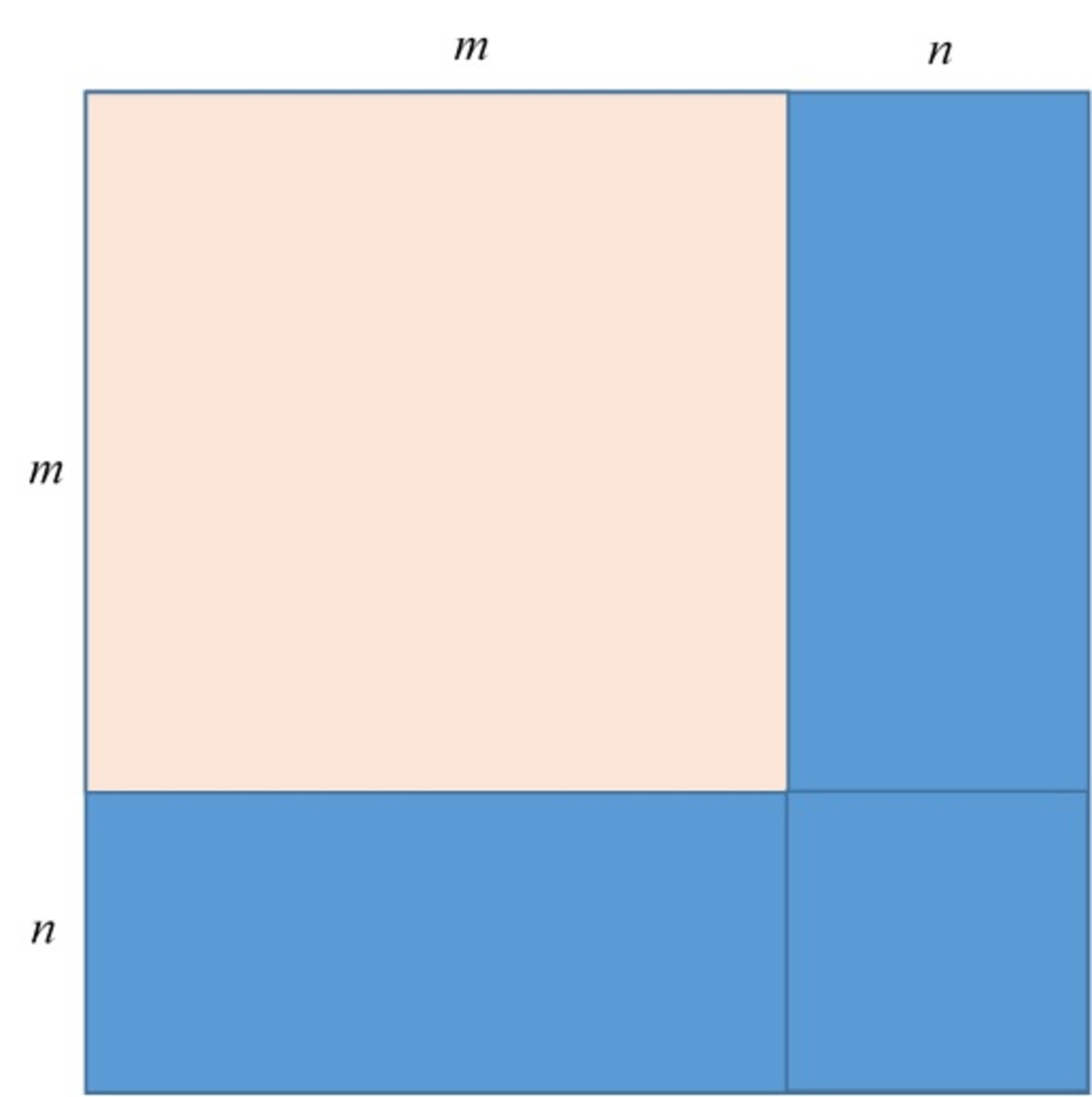How To Cut This Square?
A square is cut into 37 squares, of which 36 have area 1 cm 2 . What is the side length of the original square?
This section requires Javascript.
You are seeing this because something didn't load right. We suggest you, (a) try
refreshing the page, (b) enabling javascript if it is disabled on your browser and,
finally, (c)
loading the
non-javascript version of this page
. We're sorry about the hassle.
5 solutions
From the question we have area of 36 unit squares+area of a square with side y =area of bigger square with side x ⇒ 3 6 + y 2 = x 2 On rearranging and factorising we get ⇒ ( x + y ) ( x − y ) = 3 6 Now we could factor out 36 in a number of ways like 1×36 or 2×18 or 3×12 etc. But only 2×18 yield positive whole number solutions for x & y i.e. ⇒ ( x + y ) ( x − y ) = 1 8 × 2 ⇒ x+y=18 and ⇒ x-y=2 This leads us to x or length of bigger side as 1 0
Moderator note:
This solution makes the assumption that the larger square must have integer sides, which sounds reasonable but needs slight work to demonstrate.
Here I looked for natural number solutions because of the options.
Log in to reply
Ideally, the solution should be indepenent of the choices, unless it references them. E.g. "Which of the following is ..."
Log in to reply
So is there any other way other than sarvanth's method that leads to a solution without assumptions. I mean what is the slight work to which challenge master referred to.
Log in to reply
@Chaitnya Shrivastava – See Julian's comment in the other solution.
Log in to reply
@Calvin Lin – Okay I understood! Thank you and her
Since the original figure is a square, it's area is a squared number. Since the 36 squares have an area of 1 square cm, the sides of each square (the 36 squares) is 1 cm. Their total area is 36 square cm. From the choices, if you subtract 36 from them the answer should be a perfect square.
10 * 10 = 100
100 - 36 = 64
64 = 8^2
8 is the side length of the larger square
and 10 cm is the side length of the original square
You're making a slight assumption that the sides of the original figure must be an integer. Why must this be the case?
Log in to reply
At least two edges of the original figure will not be touching the smaller square, so these need to be filled with 1x1 squares, and if the side length is not an integer, this wouldn't be possible.
The answer is in the choices and all of the choices are whole numbers. I did a trial and error. But if there are no choices, I would probably be looking for a squared number if subtracted by 36, the result would also be a squared number (Squared number because the area of a square is its side length multiplied to another side length). Besides that, I'm lost.
You make a typo on the last line. It should be 10cm, the length of original square and not the length of single-larger square
Let the 3 7 t h or the larger square to have a side length m ; m must be a natural number otherwise the 3 6 1 -cm 2 squares cannot be laid beside it to have straight edges. The 3 7 squares can put together to form the original square as follows, where the larger square is in pink and the blue region is covered by the 3 6 1 -cm 2 squares. Again n must be a natural number.

We note that: n 2 + 2 m n = 3 6 ⇒ m = 2 n 3 6 − n 2 = 2 n ( 6 − n ) ( 6 + n ) . It can be seen that for integer m , n must be even and for m > 0 , n < 6 .
Therefore, n can only be 2 or 4 ⇒ { n = 2 n = 4 ⇒ m = 8 ⇒ m = 2 . 5 rejected
So the side length of the original square is m + n = 8 + 2 = 1 0
Moderator note:
Why must the large square be flushed against a corner of the original square?
We are given:
area of 36 squares with side 1 + area of 1 square with side x = area of the original square with side y
3 6 + x 2 6 2 + x 2 = y 2 = y 2
We can observe that this forms a Pythagorean triplet, and we know that the general formula for the Pythagorean triplet is: ( 2 m ) 2 + ( m 2 − 1 ) 2 = ( m 2 + 1 ) 2
Substituting m = 3 , we get; ( 2 × 3 ) 2 + ( 3 2 − 1 ) 2 6 2 + 8 2 = ( 3 2 + 1 ) 2 = 1 0 2
Thus, x = 8 and y = 1 0 . Hence the side of the original square was 1 0 cm .